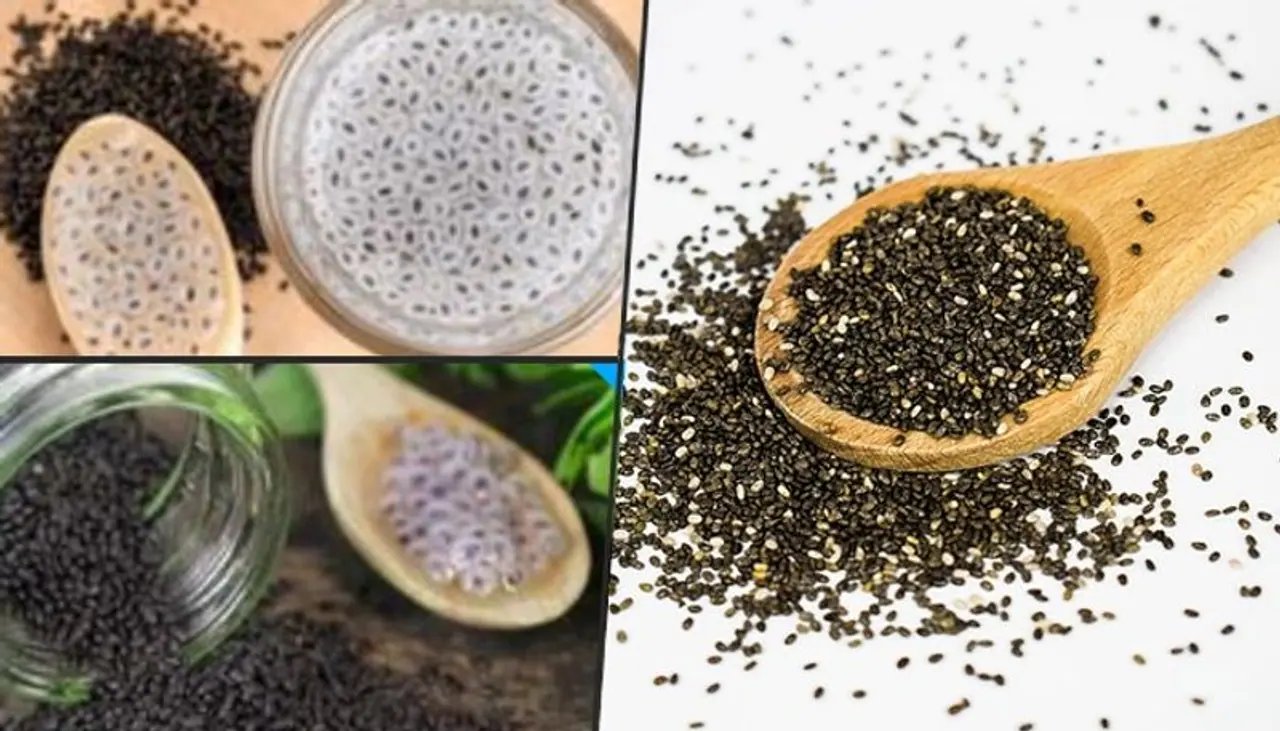Chia or Sabja seeds? Know the difference between two and their health benefits
Chia and Sabja seeds are typically consumed after soaking in water and are said to aid in weight loss.

Chia and Sabja seeds are two of the most popular foods among weight watchers. They are typically consumed after soaking in water and are said to aid in weight loss. Because of their similar appearance, most people either confuse them or can't tell the difference. We're here to help you understand the distinction between the seed and its health benefits.

1) Sabja seeds
The seeds, also known as basil seeds, are native to India and the Mediterranean region. These seeds help the body cool down and are best consumed during the hot summer months. Sabja seeds can help with acid reflux, hair health, bodily detoxification, and intestinal health.
A tablespoon of sabja seeds contains calories (60), total fat (3 g), omega (3 fat - 2,880 mg), total carbohydrates (5 g), dietary fibre (5 g), protein (3 g), calcium (8 per cent of daily intake), iron (9 per cent of daily intake), and magnesium (8 per cent of the daily intake)
Also Read: Weight loss: Drinking chia seeds water can help you stay in shape
2) Chia seeds
Chia seeds are imported from central and southern Mexico. They are high in fibre, Omega-3, and protein. Chia seeds have been shown to increase energy, stabilise blood sugar levels, and aid in weight loss.
A tablespoon of chia seeds has calories (60), total fat (2.5 g), omega (3 fat - 1.240 mg), total carbs (7 g), dietary fibre (7 g), protein (2 g), calcium (15 per cent of daily intake), iron (10 per cent of daily intake), and magnesium (10 per cent of daily intake)
What is the difference between Chia and Sabja seeds?
Sabja seeds are black and round, whereas Chia seeds are grey, white, and black in colour, oval in shape, and slightly larger than Sabja seeds. Unlike chia seeds, which take time to absorb water, Sabja seeds swell up immediately after being soaked. Chia seeds can absorb ten times their weight and usually settle to the bottom of the glass, forming a gel-like texture. Sabja seeds, on the other hand, swell after being mixed with water, creating a translucent coat around them.
Also Read: Weight loss: Drinking chia seeds water can help you stay in shape
The use of Chia and Sabja seeds?
You can eat Chia and Sabja seeds after soaking them in water. Chia seeds are also used to enhance the flavour of smoothies and shakes. Sabja seeds can be used to add a slightly minty flavour to lemonade, summer drinks, and salads. While Chia seeds can be eaten raw or soaked, Sabja seeds must always be consumed after they have been soaked.
Which is better for losing weight?
While there have been numerous studies proving that chia seeds aid in weight loss, there have been few studies proving the effectiveness of basil seeds.
Both Chia and Sabja seeds have similar nutritional properties. Soak either of the two seeds in a cup of water for 30 minutes before lunch and dinner to accelerate your weight loss. Having these seeds increases your feeling of satiety and keeps you from overeating.
Also Read: Weight loss to clear skin: 5 benefits of drinking pre-soaked coriander seeds in morning
Explore the latest Lifestyle News covering fashion, wellness, travel, Food and Recipes, and more. Stay updated with trending Health News, fitness tips, and expert insights to inspire your daily living. Discover personalized lifestyle trends that keep you stylish and informed. Download the Asianet News Official App for everything that adds value to your everyday life.